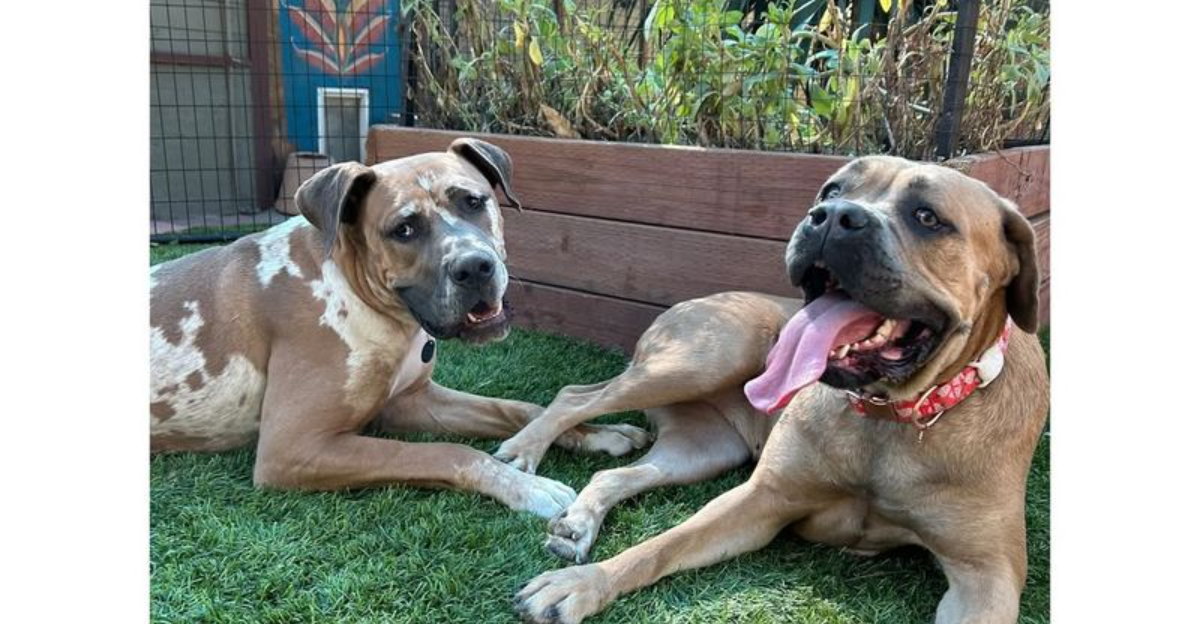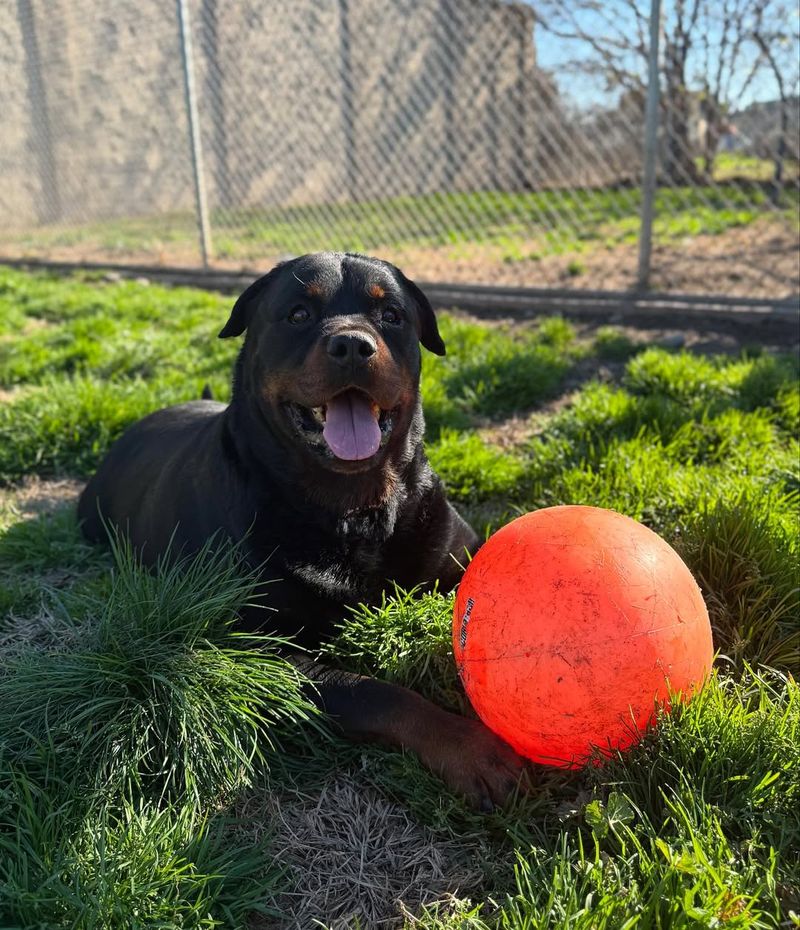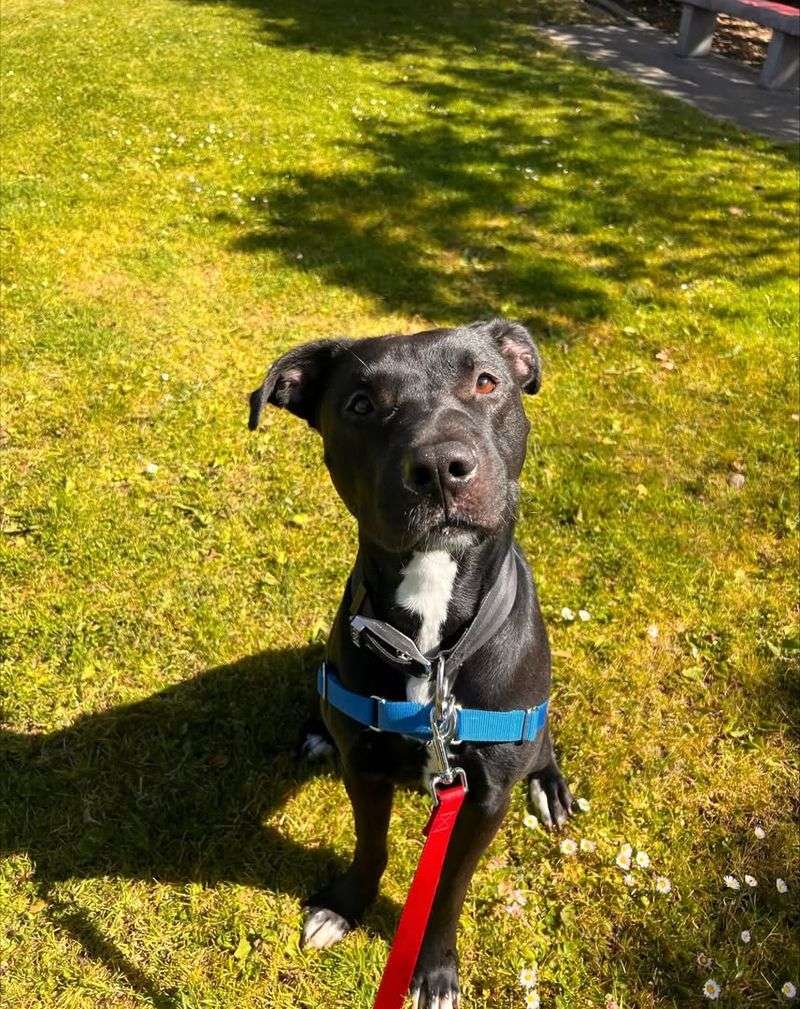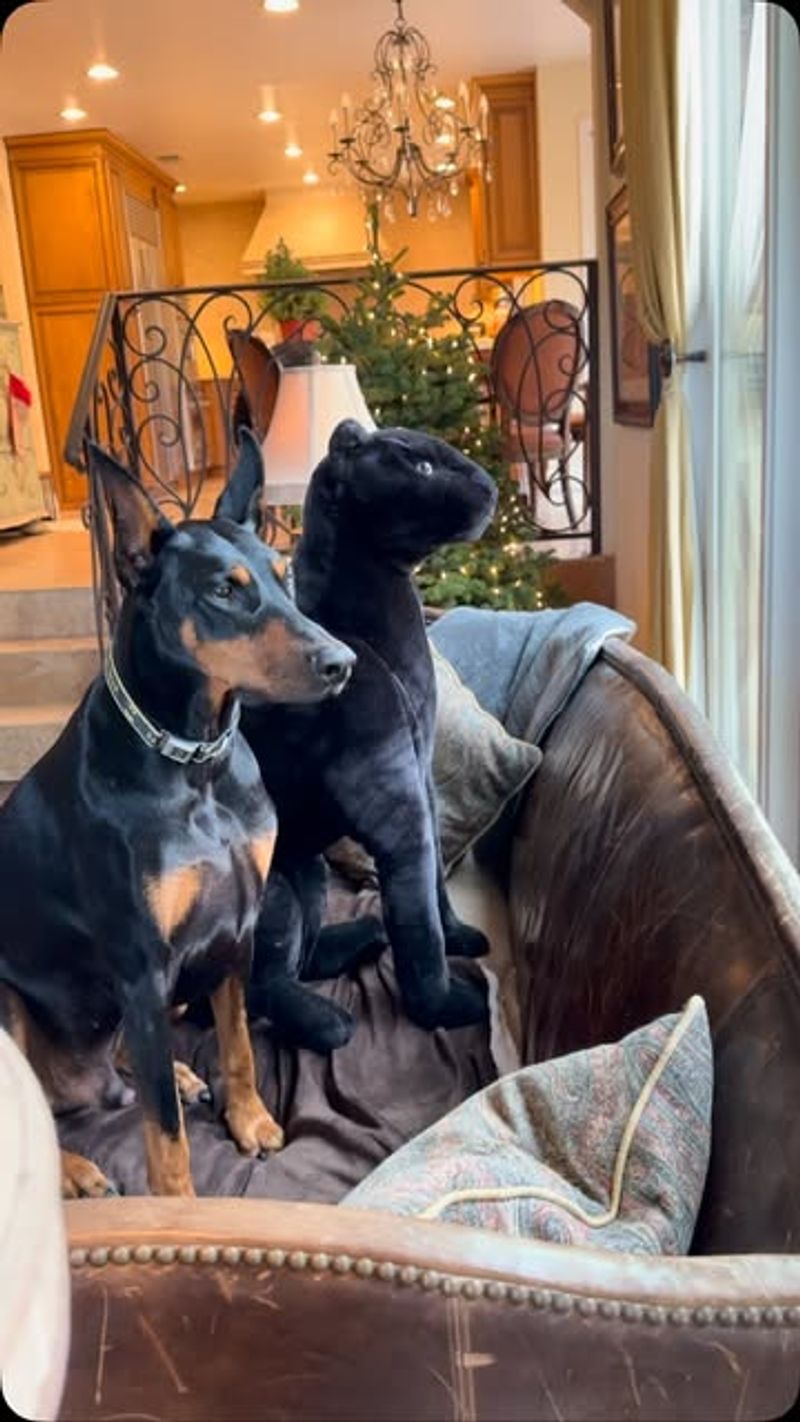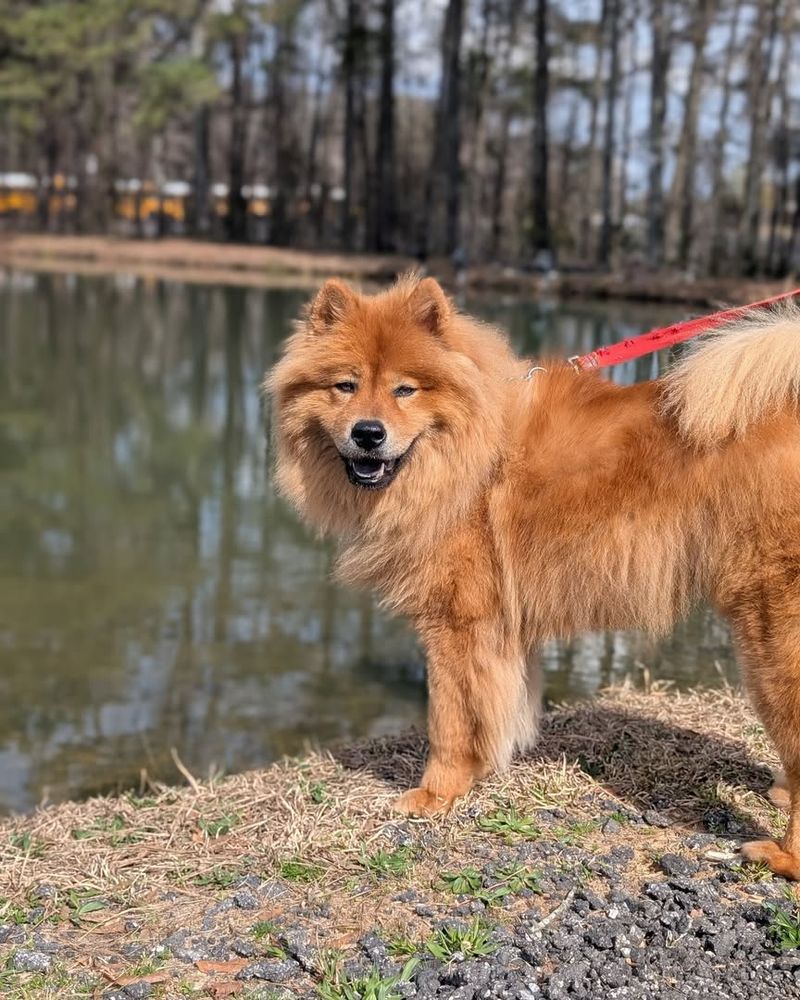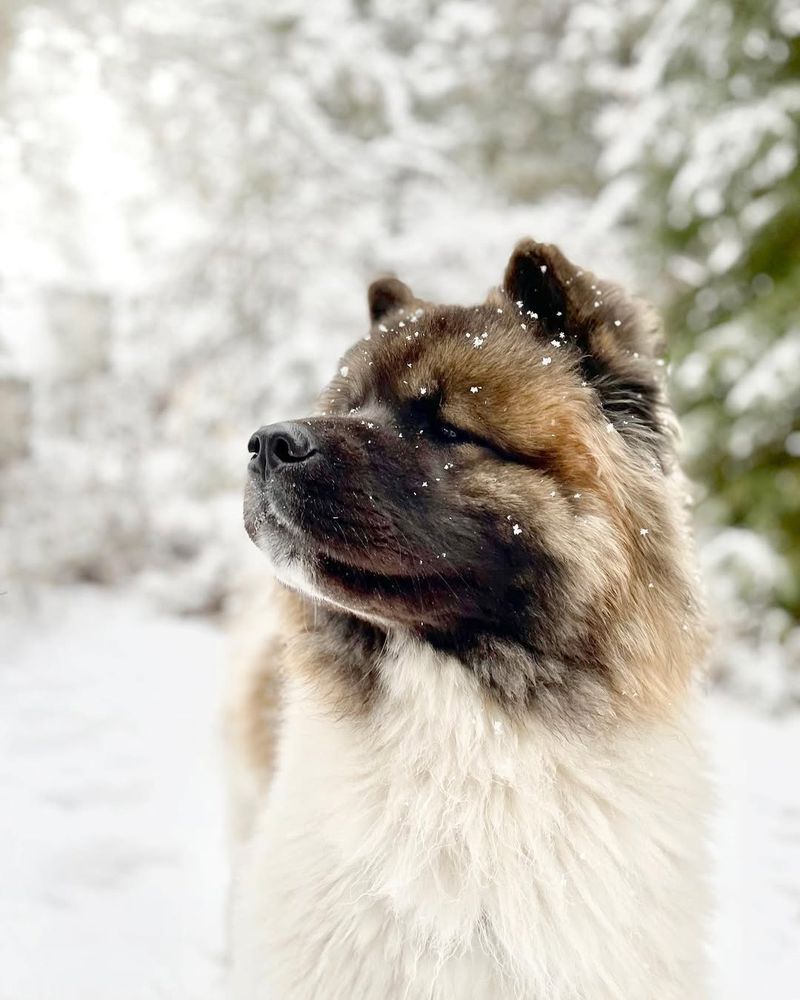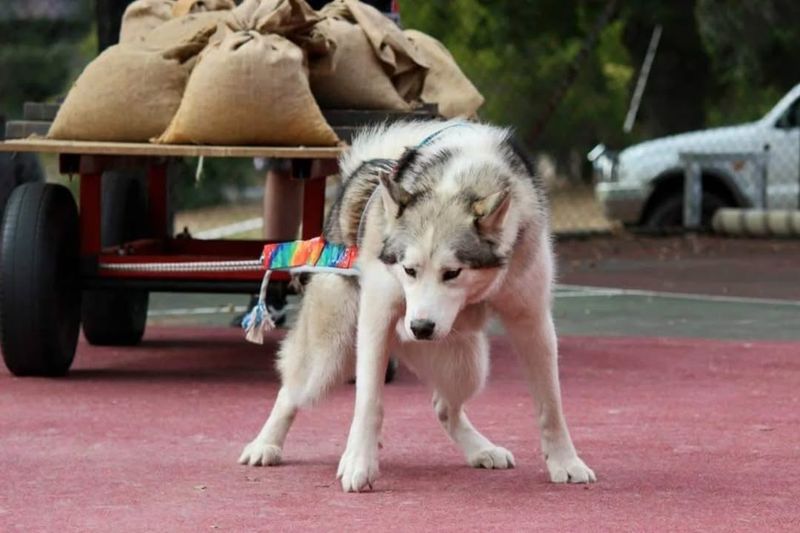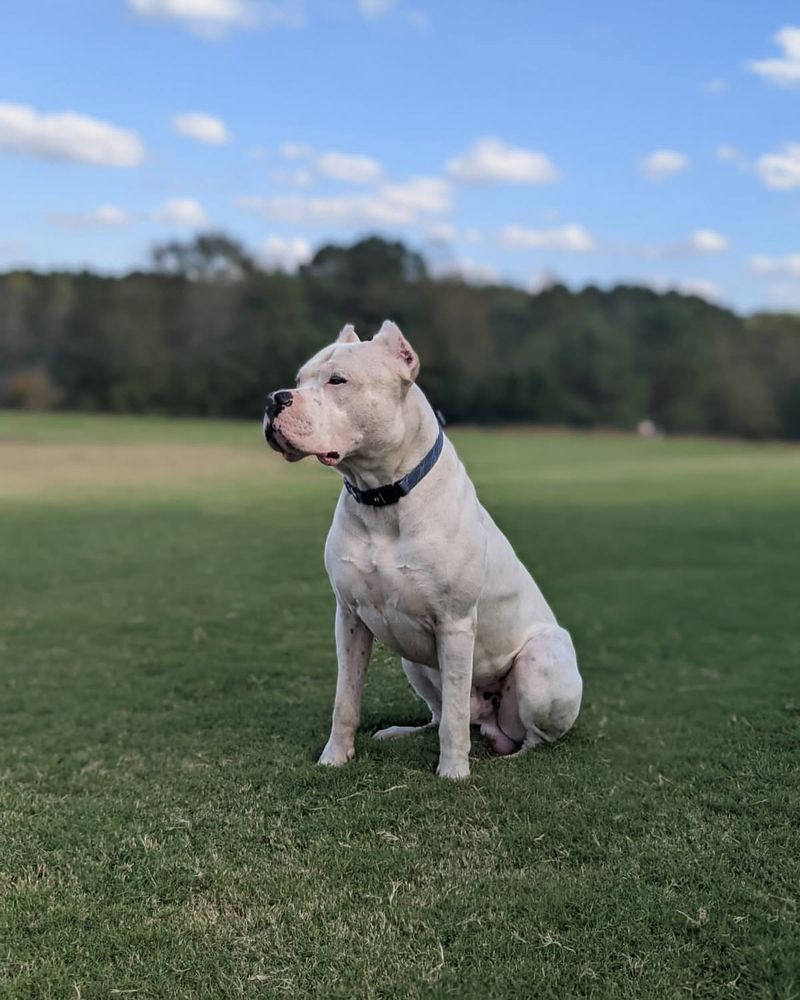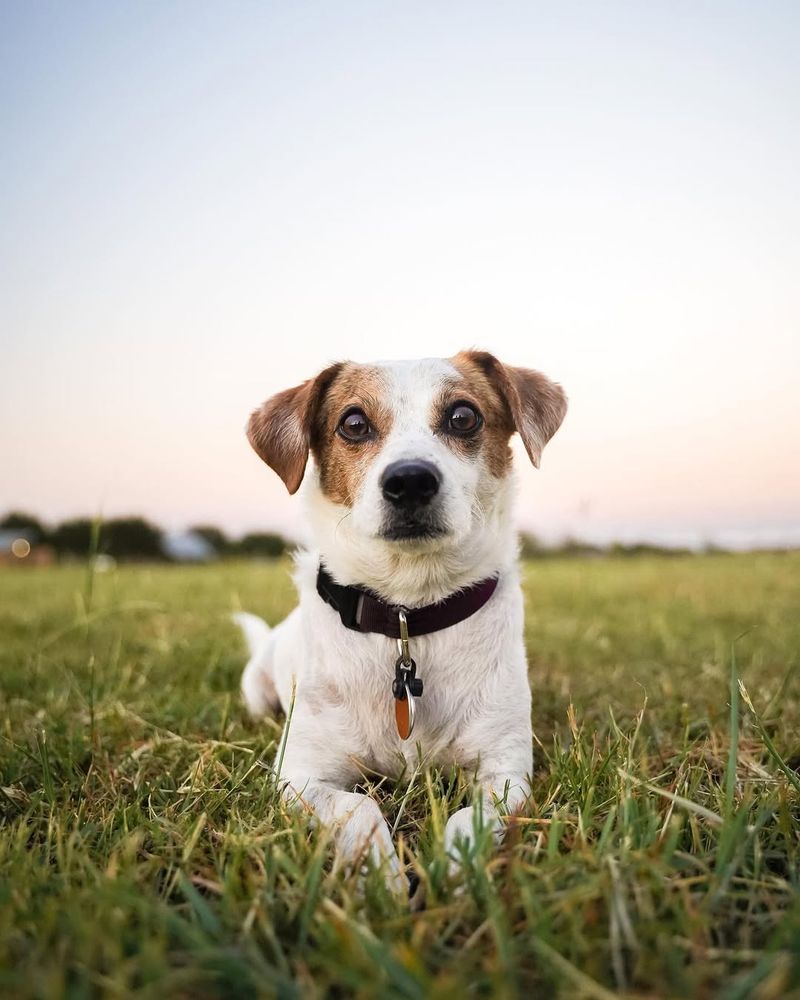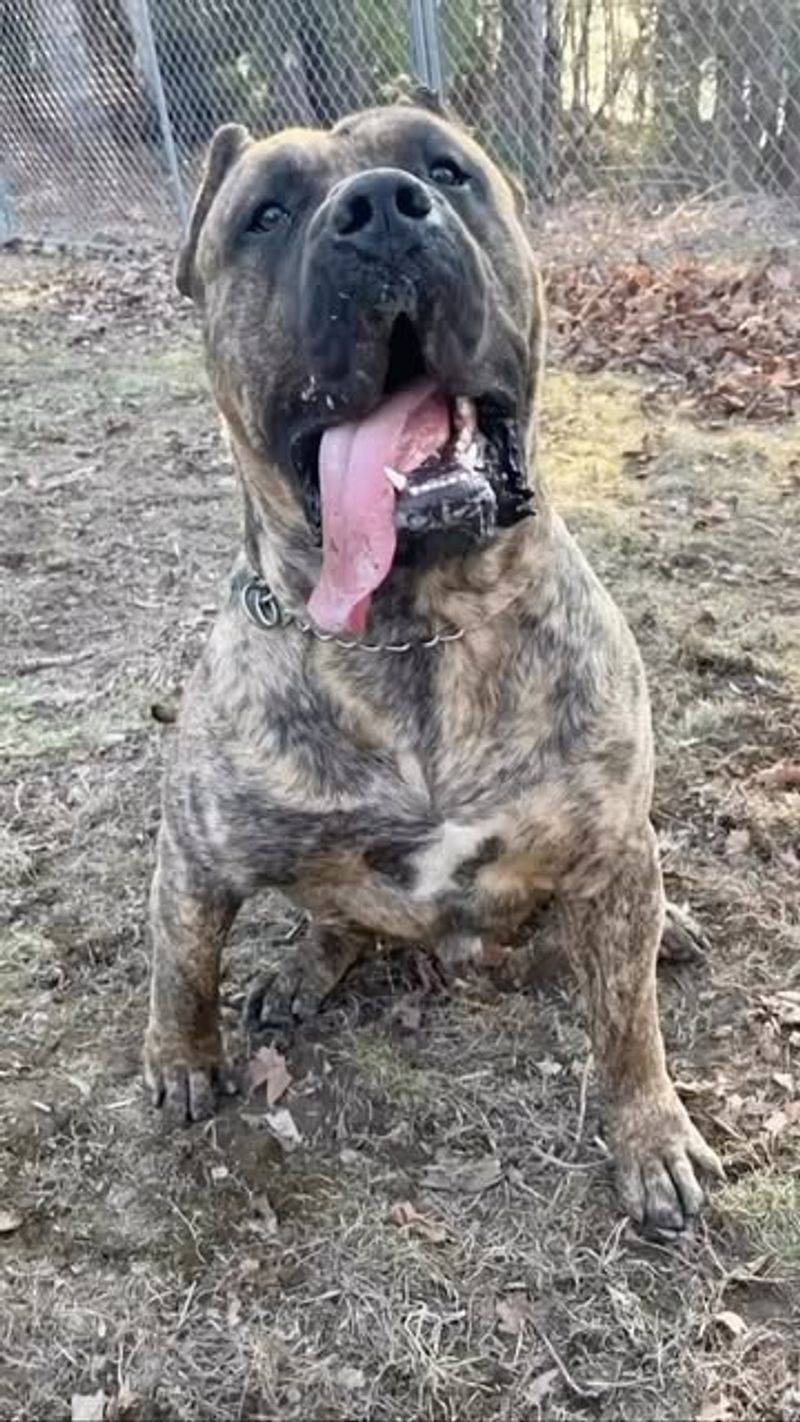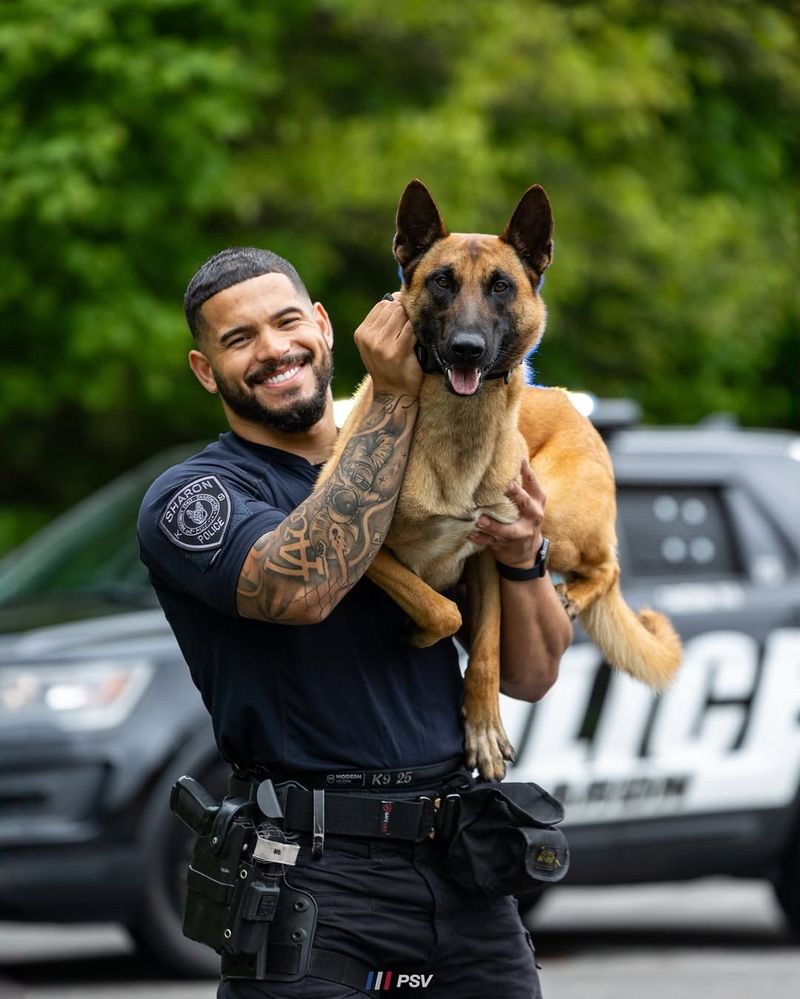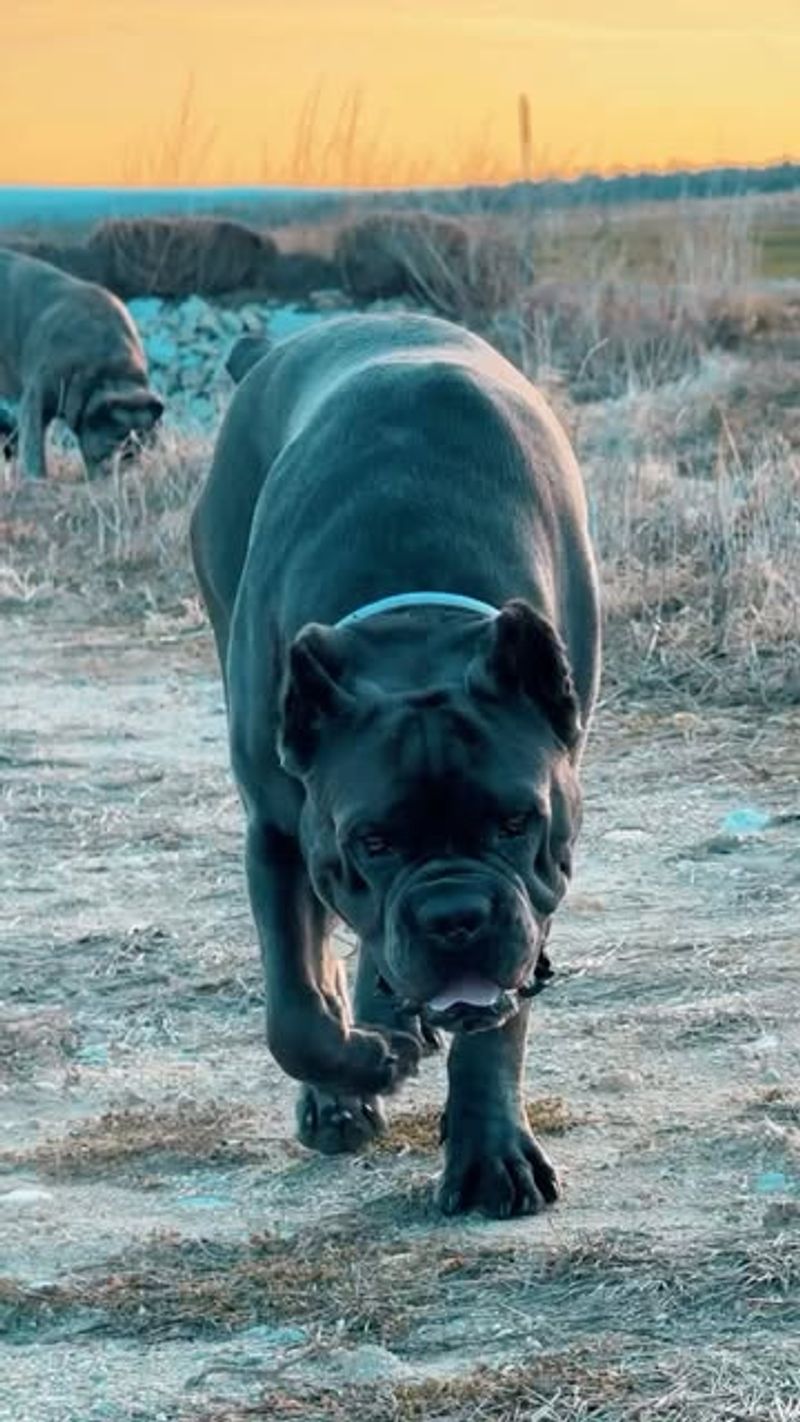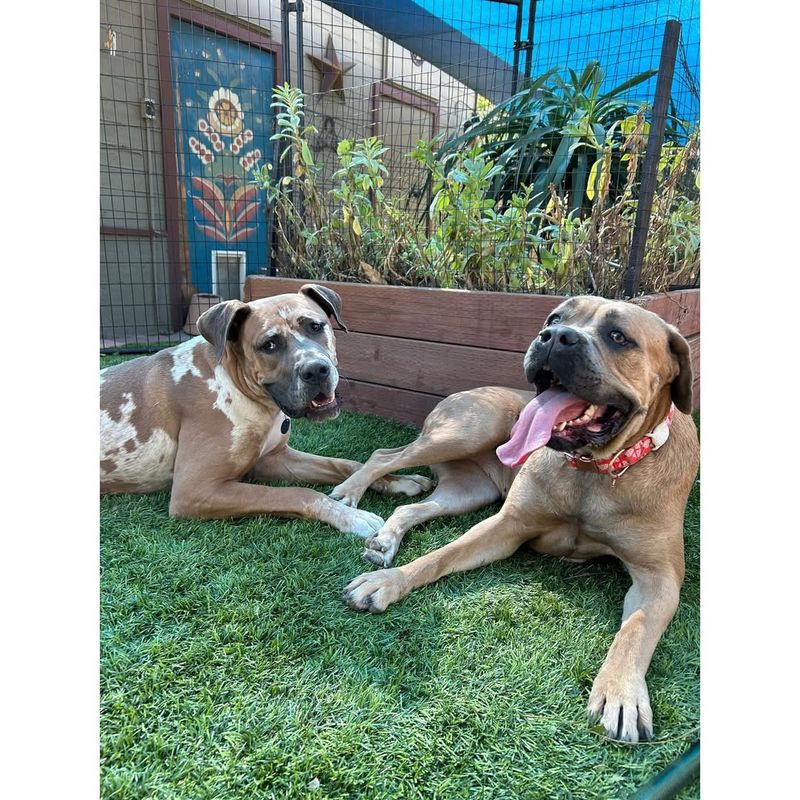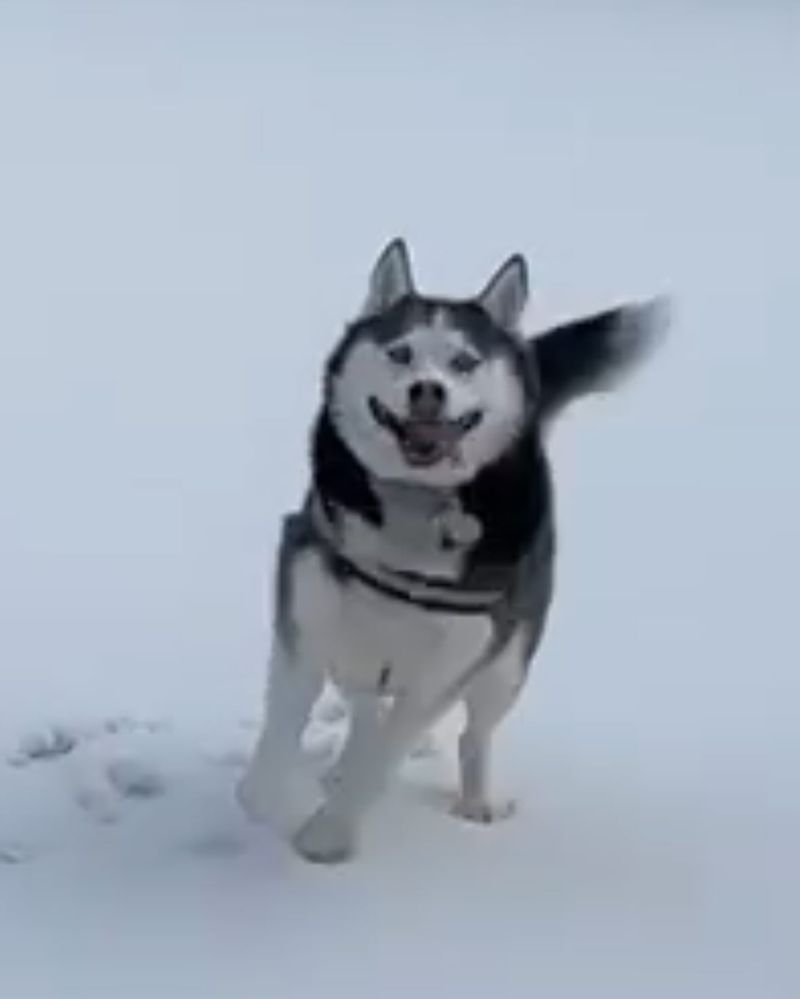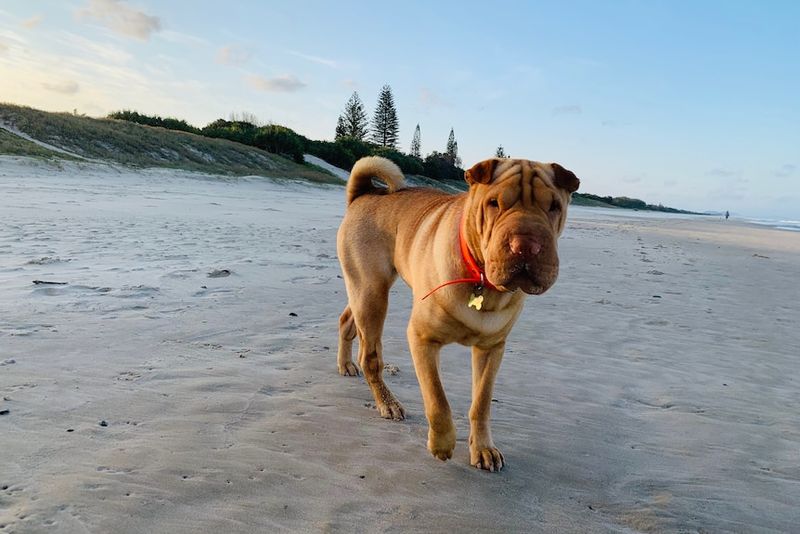While many dogs are loving and loyal companions, certain breeds have been identified by behavior studies as having higher aggression tendencies. This doesn’t mean these dogs can’t be wonderful pets, but they may require more training and socialization to ensure they are well-behaved. Here’s a closer look at 15 dog breeds that might show these tendencies, each with its own unique personality traits and needs.
Rottweiler
Rottweilers are known for their immense strength and protective instincts. This breed is loyal and affectionate with family but can be wary of strangers. It’s crucial to provide these dogs with consistent training and socialization from an early age. Rottweilers require an experienced handler who can establish clear boundaries and leadership. Their size and power demand physical activities to keep them both physically and mentally stimulated. Owners should be mindful of their environment, as Rottweilers can be territorial. A well-trained Rottweiler can be a trustworthy companion, but it requires time and commitment. Did you know? Rottweilers were originally used to herd cattle and pull carts.
Pit Bull Terrier
Pit Bull Terriers often get a bad reputation due to their history in dog fighting, but they can be loving family members. Early socialization is key, as they are naturally strong-willed. They thrive in environments where they feel part of the family. Training should focus on positive reinforcement to build trust and reduce any aggressive tendencies. Owners should be cautious in unfamiliar settings, as Pit Bulls can sometimes react unpredictably. It’s essential to channel their energy through interactive play and exercise. Fun fact: Despite their image, Pit Bulls were once known as “nanny dogs” for being gentle with children.
Doberman Pinscher
Dobermans are intelligent and alert, often used as guard dogs due to their protective nature. They are incredibly loyal to their families, creating strong bonds with those they know. Socialization is essential to prevent this breed from becoming overly protective or aggressive towards strangers. Dobermans require regular mental and physical exercise to manage their energy levels and maintain happiness. With proper training, Dobermans can be gentle companions, but they need strong leadership to thrive. Did you know? The breed was originally developed by a tax collector named Karl Friedrich Louis Dobermann in the late 19th century.
Chow Chow
Chow Chows are known for their distinctive appearance and aloof nature. They tend to be independent and can be reserved with strangers. This breed requires early socialization to prevent aggressive behavior. Chow Chows are not typically the most affectionate dogs, preferring their own space. However, with patience and understanding, they can form strong bonds with their owners. They need consistent training to overcome stubbornness and develop good manners. Their unique blue-black tongue is a notable trait. Fun fact: The Chow Chow is one of the oldest dog breeds, with origins tracing back to ancient China.
German Shepherd
German Shepherds are renowned for their intelligence and versatility. They’re often employed in police and military roles due to their keen senses and loyalty. However, they require proper training and socialization to manage their protective instincts. Early exposure to different environments and people is crucial to prevent undue aggression. These dogs need regular exercise and mental stimulation to satisfy their working nature. Despite their serious demeanor, they can be loving companions. Did you know? German Shepherds served as messenger dogs during World War I, playing vital roles in communication.
Akita
Akitas are known for their dignity and courage, often exhibiting a strong-willed nature. They are loyal to their families but can be wary of strangers and other animals. Early socialization and consistent training are essential to prevent aggressive tendencies. Akitas are best suited for experienced owners who understand their unique behavior and needs. They thrive in environments where they have a clear role and purpose. The Akita’s double coat requires regular grooming. Did you know? The Akita is a symbol of good health in Japan, often given as a gift to new parents.
Alaskan Malamute
Alaskan Malamutes are strong and independent, known for their ability to endure harsh conditions. They have a high prey drive and can be dominant with other animals. Consistent training and socialization are key to managing their instincts. Malamutes require ample exercise and mental stimulation to prevent boredom and potential aggression. They’re best suited for active owners who can provide the environment they need. Despite their strength, Malamutes are often gentle with family members. Did you know? Malamutes were bred by the Inuit people for hauling heavy freight and hunting seals.
Dogo Argentino
The Dogo Argentino is known for its strength and courage, originally bred for big game hunting. This breed requires strong leadership and consistent training to ensure proper behavior. They are naturally protective and may show aggressive tendencies if not well-socialized. Owners need to provide regular exercise and mental challenges to keep them happy and healthy. A well-trained Dogo Argentino can be a loyal and loving companion. Did you know? This breed was developed by Argentine physician Dr. Antonio Nores Martinez in the 1920s to combat wild boars and pumas.
Jack Russell Terrier
Jack Russell Terriers are small but mighty, known for their boundless energy and intelligence. They can be feisty and sometimes show aggressive behavior towards other animals. These terriers need firm training and plenty of mental stimulation to channel their energy positively. Socialization is important to prevent them from becoming overly territorial. Despite their size, they require as much exercise as larger breeds. Fun fact: Jack Russell Terriers were originally bred for fox hunting, and their tenacity is evident in their personalities.
Presa Canario
The Presa Canario is a powerful and confident breed, known for its guarding abilities. Originally used for herding and protection, it requires an experienced handler. Early training and socialization are crucial to ensuring this breed is well-mannered. Presa Canarios can be territorial and may show aggression if not properly managed. They thrive in environments where they have a job to do. Did you know? The Presa Canario is the national dog of the Canary Islands, where it was developed for working with livestock.
Belgian Malinois
Belgian Malinois are highly intelligent and driven, often used in police and military roles. They require a lot of exercise and mental stimulation to satisfy their working nature. Without proper training, they can become too focused or even aggressive. They need an experienced owner who can provide structure and leadership. With the right guidance, Belgian Malinois can be loyal and obedient companions. Fun fact: This breed played a prominent role in the U.S. Navy SEALs’ operation to capture Osama bin Laden.
Cane Corso
Cane Corsos are known for their imposing appearance and protective instincts. They are loyal to their families but may be wary of strangers. Early socialization and training are key to managing their natural guarding tendencies. These dogs require a confident handler who can establish clear rules and boundaries. Regular exercise is essential to keep them healthy and content. Did you know? Cane Corsos are descendants of Roman war dogs, and their name translates to “guardian dog.”
Bullmastiff
Bullmastiffs are large and powerful, known for their natural guarding instincts. Despite their size, they are often gentle with their families. Socialization and training are important to prevent them from being overly protective. Bullmastiffs can be territorial, so they need a secure environment. They thrive with structured routines and consistent leadership. Fun fact: Bullmastiffs were originally developed to guard estates in England, combining the traits of Bulldogs and Mastiffs.
Siberian Husky
Siberian Huskies are known for their friendly demeanor, but they have strong hunting instincts. They require firm training and socialization to manage their energy and prevent aggressive behavior. Huskies are best suited for active owners who can provide regular exercise and mental challenges. They can be independent and may test boundaries if not guided properly. Their striking appearance and playful nature make them popular pets. Did you know? Siberian Huskies were originally bred by the Chukchi people of Siberia for sledding and companionship.
Shar Pei
Shar Peis are known for their unique appearance and calm demeanor. They can be aloof with strangers and require early socialization to prevent aggressive tendencies. These dogs need consistent training and clear leadership to thrive. Shar Peis are best suited for owners who understand their independent nature. They can be loving and loyal companions with the right guidance. Fun fact: The Shar Pei’s wrinkles were originally bred into the breed to protect them in dog fights.
